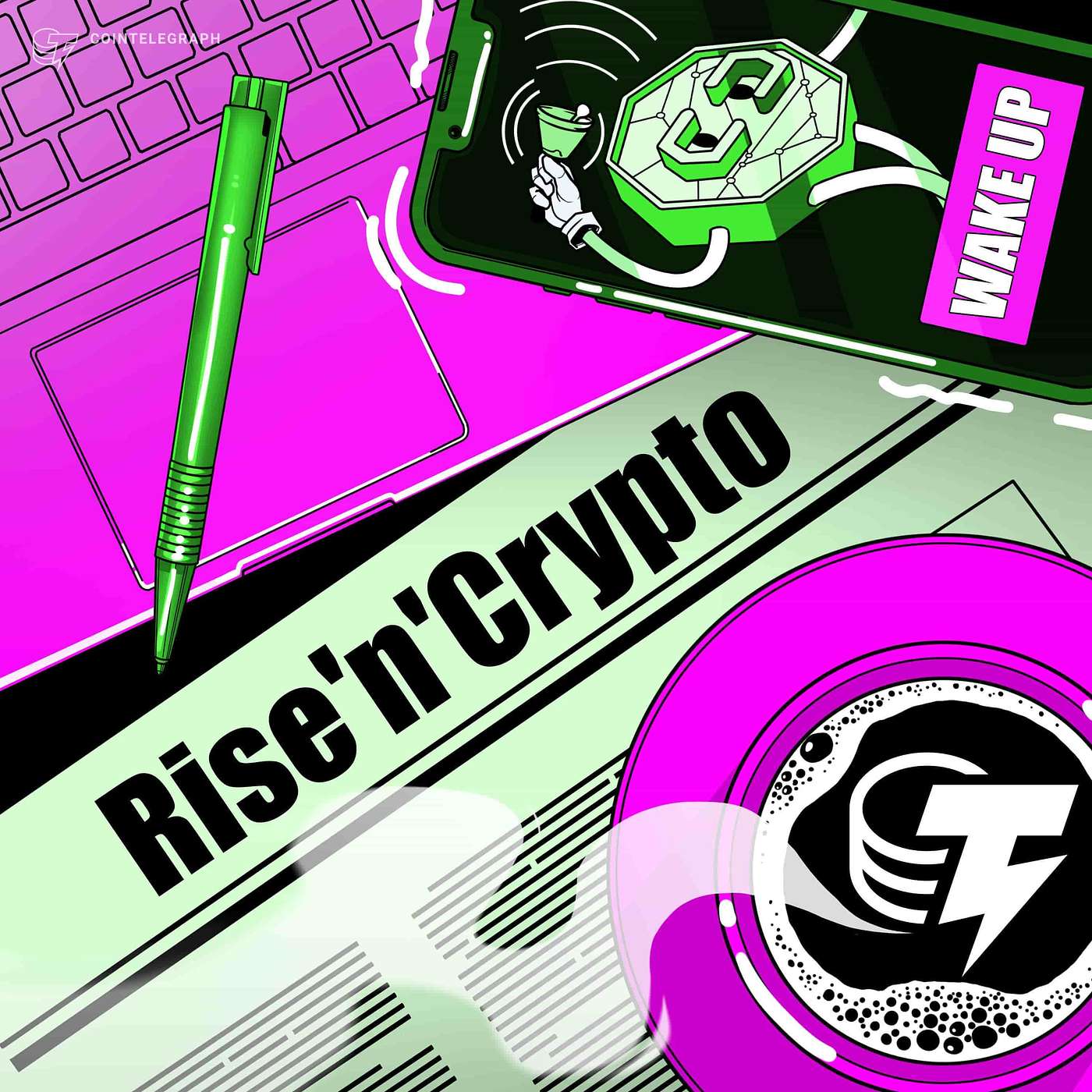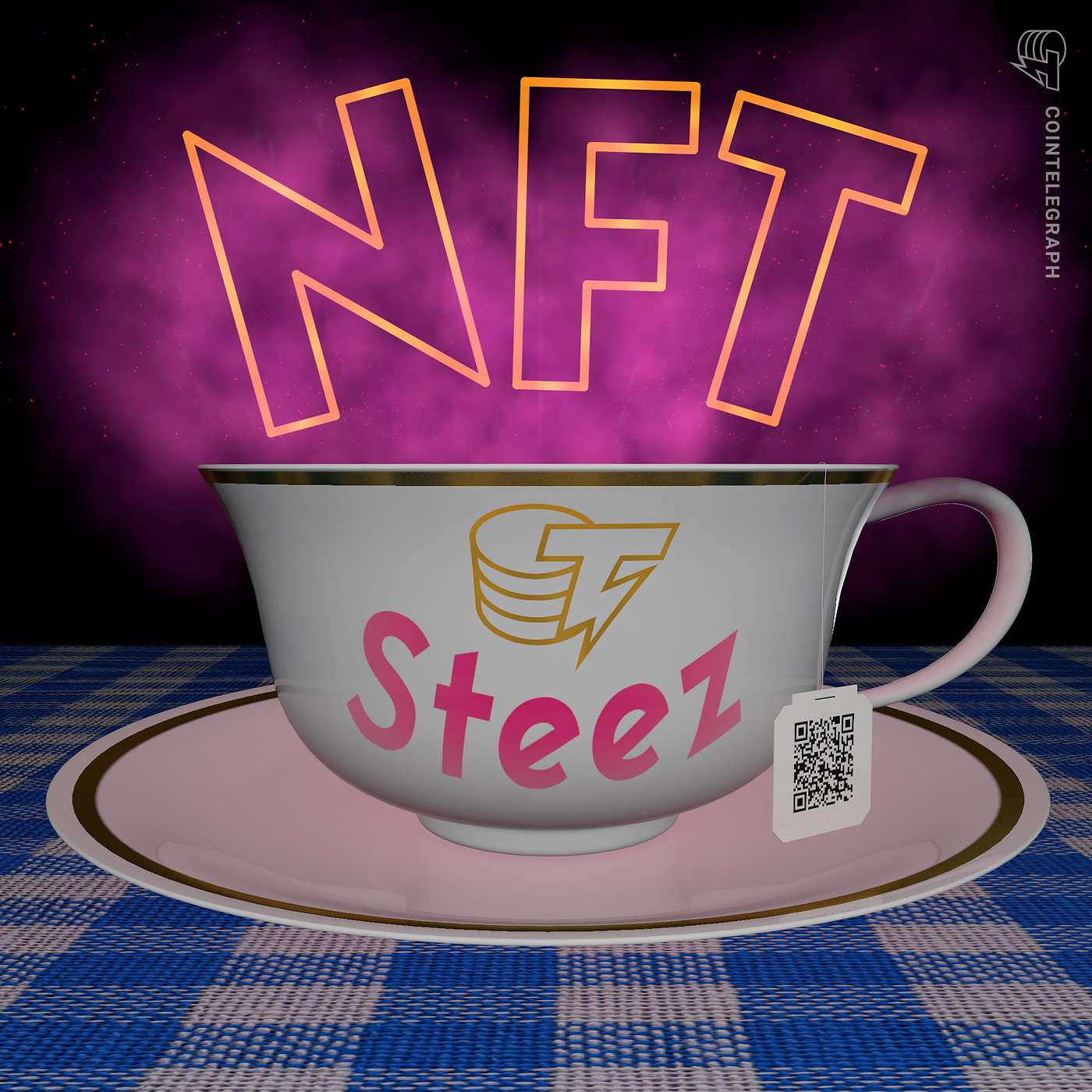[00:00:03] Jana Bertram: Is there going to be an NFT mania? And probably, the answer is no. And one of the ways to incentivize these trading volumes was to slash royalties. Her earnings in 24 hours were somewhere close to like $300,000. As time progresses, I think you also see like more environments to have very affordable gas.
[00:00:23] Elisha Owusu Akyaw: Hello, everyone. Welcome to another episode of Hashing It Out. And today, we are talking about NFTs. Someone probably chuckled when they heard NFTs. It’s 2024, and we’re recording this late November, coming out in December. And yes, we are talking about NFTs because they aren’t dead yet, and they probably never died. Keep seeing this meme about NFTs being dead, and it just like cracks me up all the time. But here to help me talk about NFTs and how NFTs are evolving, what RARI Chain is building in the ecosystem, is Jana. Hi, Jana, welcome.
[00:01:00] Jana Bertram: Hello. Thanks for having me here. Yeah, it’s so funny, like NFTs are dead. We kind of keep hearing that for quite a while now, and every now and then, it’s like, no, they’re not dead. This is what’s happening. So, yeah, let’s unpack it today.
[00:01:13] Elisha Owusu Akyaw: Definitely. So, Jana Bertram is head of strategy at RARI Chain or RARI Foundation. And RARI has undergone some changes in the last couple of months. Been following, so should be really exciting to talk about. But let’s address the elephant in the room. Are NFTs dead?
[00:01:34] Jana Bertram: Awesome. So, just on the point of RARI undergoing changes, just so that everybody has context for RARI Foundation, RARI Chain, Rarible, it’s essentially like three projects that are very closely connected. But Rarible is the NFT marketplace, a decentralized back end, which is a protocol, which is governed by a DAO, and the foundation works on behalf of the DAO. Now we also launched RARI Chain, which is also governed by the DAO. So, I just want to put it out there so that everybody knows. And the RARI Chain has royalties embedded on a node level. So, it’s creator-first.
So, when we’re talking about NFTs, there’s like multiple ways of looking at it. So, when we talk about NFTs are dead, are they, are they not? I think a lot of times people conflate if NFTs are alive or if they’re dead with are they necessarily at the forefront of a bull market. Because that’s how NFTs became prominent, and that’s how NFTs became top of mind for a lot of people. And for a lot of people, that’s how they learned about NFTs was during the last bull. And really, the expectation that somehow the price of NFTs will 10x, 100x, they’re going to be like great investments that you will ride the wave, you know, during bull, and you’re just going to get like really good earnings based off of your NFT earnings — I think that’s a little conflated. Usually, what happens when we enter a bull market, each bull is driven by different innovation. So, you can’t really expect that the next bull cycle, which is starting right now, will be driven by NFTs. It will be driven by other things. The NFT bull cycle already happened. So, really think about NFTs as something that is here, is here to stay, but it’s not going to be this level of hype that we saw in the previous round.
That said, there are still communities that are really exciting, that are really vibrant and that have like pretty good signs of life. There’s also proper crypto art that creators embraced NFT technology as a way of essentially almost distribution of their work and monetizing their work, but it’s like one of many tools that they are actually using. So, that’s here to stay as well. And then you also have the component of the actual technology and what it can unlock and power. And it’s not necessarily related to PFP, and it’s not necessarily related to creators at all. It can be related to IP. It can be related to ownership. It can be related to like financialization of assets. So, all of that is powered and can be further powered by NFTs as well. So, when we’re thinking about like NFTs’ death, I think it’s mostly about, like, is there going to be an NFT mania? And probably, the answer is no. But NFT as a technology is actually highly prevalent. And then NFTs as a form of creators entering Web3 and monetizing their creations through Web3 means is also here to stay. So, that’s essentially like, you know, the TLDR of why NFTs are not dead.
[00:04:38] Elisha Owusu Akyaw: I like the way you talk about the various use cases of NFTs, and maybe we can have like a bigger conversation about that and how RARI Chain is making that happen. But what would be that bullish use case you have seen? Or should I say that bullish news about NFTs in the last six months?
[00:04:57] Jana Bertram: Well, a lot of chatter is about real-world assets, and real-world asset financialization in Web3 is, to a big degree, powered by NFTs. We’re talking about fractionalization, we’re talking about lending, NFT lending, and all of that enables collective investment in real estate, fractional ownership, you name it. So, I think, you know, the real-world asset use case is definitely highly relevant to adoption of NFTs.
And besides that, you have things that have already been experimented in the past, and we’ll see how much traction they continue having in the future. But essentially, NFT as an engagement mechanism. Through an ownership of NFT, you are able to actually understand who’s your audience and then target them with special promotions or special messages. So, brands have been using that in the past. Some Web2 brands experimented with this already a few years ago. Some Web3 brands are actually, you know, really going with it. But even like the successful PFP communities or the projects, they treat their communities in this way as well. So, the ownership of a certain NFT really brings with it perks that you would not be able to acquire otherwise. So, essentially, this membership aspect of the community is definitely another use case that we’ve seen has a product-market fit. And the question is like, how big of a product market fit it will be?
[00:06:21] Elisha Owusu Akyaw: I really love the real-world assets narrative in the Web3 space. It’s one of the things that could really push Web3 and bring a lot of value to blockchain technology. But let’s pause for a sec. We started on a very hot note. Let’s talk about you. What has your Web3 journey been like, and how did you end up at RARI Chain?
[00:06:44] Jana Bertram: Not very surprisingly, I come from the creative world, so that’s how I entered Web3, through the NFT space. I originally worked in creative agencies and on brand teams in companies that have creative focus, such as WeTransfer, which is a file-sharing company based out of Europe which are creator first, Instagram, and then I had some other global clients that I always ran big campaigns for, and a lot of times creators were one of the audiences for those campaigns.
So, when I joined Web3, I already had since 2009, in my social circle, people that either work in Web3 or that mined or mined Bitcoin, or that experimented with like early Web3 projects. And the more I spent time with them, and the more I saw the energy of Web3 and how people were building together, and a bunch of smart people that are actually highly collaborative and highly open, and the spirit of growing something together, growing the pie, rather than trying to eat from each other’s share, was really inspiring in terms of the culture the industry has. And it’s due to the fact that it’s like still early stages, but it’s highly energizing. So, that paired with the fact that there is a component in Web3 which is creator-focused, such as the NFT space, I decided to make the leap full-time. So, RARI Foundation is a very natural fit for me because we are dealing with creators and NFTs, and that’s kind of what we’ve been doing.
And my role is focused not only on working with creators. As the head of strategy, I also focus on maturing our decentralization and structures and processes so that the DAO works in an efficient manner, but also, it’s future-proofed for potential misuse, attacks and so whatnot. I think, you know, the DAO space, it’s very interesting just on its own as well, and helping our governance work like state-of-art level, essentially. So, we have a bunch of work that we’re doing on upgrading our governance to make sure that we’re actually able to have it work as optimally as it can. So, this is not a podcast about governance and DAOs, because that’s a whole standalone mountain that we can be talking about.
But yeah, so these are essentially the two big areas of focus: the NFT decentralized infrastructure building and growth and adoption of the tech stack that is governed by the DAO, which is a protocol and RARI Chain, and then the actual governance work and the decentralization aspect. So, these are the two big focus areas that I have at the RARI Foundation, and I feel like they’re equally important since the time I joined.
[00:09:26] Elisha Owusu Akyaw: Awesome. So, let’s get into some of the issues that have come up in the NFT space in the last couple of months. I’d say that they may have also contributed to the cool-off in hype in the NFT space, which was creators and creator royalties. And then, there have been multiple solutions that have been suggested to deal with this issue, but we’ve also seen people come up with different solutions that, for lack of a better phrase, are surprising. So, RARI has decided to become the creator chain. What does it mean to be the creator chain? And how does it solve some of these issues that creators faced in the past?
[00:10:05] Jana Bertram: Yeah, so you mentioned royalties. And we’re just kind of like coming out of a very long bear market, and what happened was, great, last bull NFTs were going through the roof. Everybody was happy. Transaction volumes were high. All these trading platforms were making great fees, and everything was looking bright. When that hype cooled off and the bear market hit, transactions went down, the volume went down, the prices of the NFTs went down, and suddenly, these platforms were not seeing as much traction as they have gotten used to. And some of them like really needed to keep a profit. So, they were looking at ways for incentivizing users to be trading. And one of the ways to incentivize these trading volumes was to slash royalties and say, well, we know that we said that there are royalties on NFTs, and these royalties go to the creators. Well, actually, as a platform, we don’t need to respect that anymore, and we have decided to opt out of royalties so that more people will find transacting interesting. And around the time, like we also had platforms like Blur emerge, then they never actually stood for royalties. It was just trading first.
So, that was kind of like the world in which about a year and a half ago, we saw some of the big marketplaces actually say, well, royalties are optional. And that really put a wrench in business models of a lot of creators. And because you would, for example, drop an edition, and you would have lower initial mint prices because, in your thinking, there was trading volume to be done on your NFTs, and with each, there were royalties to be paid. So, you kind of build that into your financial projection. And now, that financial projection was wrong. So, a lot of creators felt robbed in a way. And it was just a lot of work that creators put in their what will become NFTs, and this just felt like highly unfair.
So, at Rarible, actually, around the time, they just reiterated with their audience that Rarible has always respected royalties, and they kind of doubled down on the fact that they will never make them optional. The royalties are here to stay. So around the same time at the foundation, we were playing with the idea of building our own proprietary L3, actually, we built. Not an L2, L3. Because we’re in orbit on top of Arbitrum One. And the idea was then, okay, well, if we are seeing that creators actually don’t have a space where they can feel safe in a way for their future income and truly respected for the contribution they are giving to Web3, then we want to make sure that in our ecosystem, on our chain, the royalties are non-negotiable. That means that they are embedded on a node level. If a marketplace decides not to pay royalties, they can’t do that on our chain, essentially. The sequencer only validates transactions that respect royalties, and if they don’t respect royalties, it will not validate the transactions. So, a very simple mechanism, but it is a way to ensure that if your NFT gets transacted, those royalties will be yours.
[00:13:21] Elisha Owusu Akyaw: Interesting, because I was a bit surprised when I saw RARI launch an L3 or a chain, and I was wondering, was it just generally impossible for you to build on top of already existing networks, whether technical issues? Or would you say existing networks were never built with NFTs in mind? Or better still, they were built with NFTs in mind, but they lacked the tools that would create a great environment for NFTs to thrive?
[00:13:53] Jana Bertram: NFTs, per se, don’t really require much custom tech, but it was this royalty enforcement that we have not seen on any other chain. So, to my knowledge, we were the first chain with embedded royalties on a node level. So, we just wanted to offer this optionality to creators in Web3. If they wanted that level of security, they can always come to RARI Chain and feel that the guarantee is in place.
[00:14:20] Elisha Owusu Akyaw: Interesting. So, what has the general response been from the community, especially NFT creators and also devs who are now building on top of RARI Chain?
[00:14:31] Jana Bertram: Yeah, so I think as we opened this discussion with like, NFTs are not dead, but they’re definitely not having their high time. So, I think we definitely see creators embrace RARI Chain, and most of the NFTs, if you look at what is available on RARI Chain, are actually really striking creations of good value. So, I think you will see a lot of those individual art pieces. And then some platforms have embraced RARI Chain, especially when it comes to minting. And then, of course, Rarible embraced RARI Chain as well. So, you are able to drop and transact on RARI Chain through Rarible. And I think we are definitely seeing some like nice level of engagement. I wouldn’t say that there are some raging PFP collections on the chain that are necessarily like making huge volumes. I don’t think that that was necessarily even an intention for this space. The intention was really to be here for creators and for them feeling the recognition for their work. And I think with that in mind, we have collaborated with really well-respected names and well-respected creators in both Web3 and Web2 world, and we continue to do so even in the coming year.
[00:15:45] Elisha Owusu Akyaw: So, another interesting issue back then, when NFTs were all over the place, was transaction fees, scalability, the ability for people to trade NFTs at a lower cost in an affordable way. I remember there were times when I would just not sell an NFT because I’m selling the NFT for like $600, and I have to pay $132 worth of ETH in gas fees. How is RARI Chain handling scalability, and how does that change the way people approach the buying and selling of NFTs?
[00:16:20] Jana Bertram: That’s a really good question. So, because we are an L3, that means we are on top of L2, which is Arbitrum. It means that our gas is progressively cheaper. So, essentially... And then you also have blobs kicked in in the past years. So, that kind of made gas cheaper than what people would have been paying more than a year ago anyway. So, I think with that the gas is extremely affordable. We even saw that when we launched the chain, we launched it with 10 different artists, and each of them had an open-edition mint. The first one had, I believe it was like 13,000 mints in 24 hours. And it was just crazy to see like how much people were like minting her artwork. It wasn’t free. It wasn’t like completely free. But it was also maybe in conversion, I can’t remember exactly, but something like $20. It was relatively affordable, but it wasn’t free. But with that, her earnings in 24 hours were somewhere close to like $300,000. So, it was like really amazing to see. And she actually did also do like a good degree of volume on secondary, which is the resale. So, she also reaped royalties, and all of that within the first few days of the chain launch. I think all the 10 artists combined made something around 176 ETH in revenue from dropping their editions on RARI Chain throughout the launch phase.
So, I think that was really great to see. So, it’s just a testament to the fact that, like the gas fees are definitely not judgmental. And I think as time progresses, I think you also see like more environments to have very affordable gas. I think the scalability question, it starts to be resolved. And I think, you know, just building in an efficient environment, which is the Arbitrum Orbit chain, allows us to have very competitive gas fees.
[00:18:07] Elisha Owusu Akyaw: When we tackle scalability, the next question becomes decentralization and security. What is RARI Chain’s approach to ensuring that there’s decentralization and security in the NFT ecosystem and on your chain?
[00:18:19] Jana Bertram: Yeah, so we are on top of Arbitrum. Arbitrum is run by a DAO, essentially. It’s governed by a DAO as a stack. So, they are actually the most decentralized out of L2s to date. And RARI Chain will be fully decentralized as soon as our governance upgrade kicks in. So, we’re essentially moving our governance from Ethereum mainnet to RARI Chain. And we’re also upgrading our governance contract to a contract that is being developed right now between Wormhole, ScopeLift and Tally, and they’re working on a contract for multichain governance that allows you to count tokens from any kind of chain to bridge the decision of the governance to any kind of chain. So, once that is in place, then the full governance of RARI Chain can kick in. Right now, we’re working with a provider that keeps everything up and running, and they’re working as a vendor of the foundation. So, we steward the chain on behalf of the DAO, and once the governance upgrade is finalized, then it will be the DAO that will be governing the chain, which is really exciting.
[00:19:22] Elisha Owusu Akyaw: Sounds great. We’ve spoken about scalability. We’ve spoken about royalties. What are the other things that are holding the NFT space back in a way that makes it impossible for the space to get the same traction it got, or even grow beyond the traction it has currently?
[00:19:39] Jana Bertram: It’s an interesting question. So, partially, when we are thinking about just, you know, retail and adoption of NFTs by what we call normies, I think there’s definitely a reputational issue. I think the word NFT has a lot of baggage from speculations, from people actually losing money. And when you talk to people outside of Web3, they will either find that NFT is something that is better to stay away from or that is completely irrelevant, actually. So, there’s definitely that reputation issue. I think a lot of people have moved from the word NFT, and they’re talking about digital collectibles, digital content, digital art and so on. And I think that’s like more correct, but it doesn’t actually encapsulate the full use case of NFTs, because we also talked about real-world assets and NFTs as infra, essentially.
So, I honestly think that the biggest opportunity for NFTs is, one, actually seeing like more adoption by creators and having them enter the Web3 space. And at the same time, seeing a little bit more of a use case for Web3 in general. So, with, for example, real-world assets. Bringing more real-world assets onchain, that will unlock that growth. So, I think it’s not necessarily just about adoption of NFTs and expansion of NFTs. It’s about expansion of blockchain technology at large and adoption of blockchain technology at large.
[00:21:05] Elisha Owusu Akyaw: So, we’ve discussed different use cases of NFTs in the last couple of months, and we are seeing a change in how NFTs are being used. What would NFTs evolve into, and this is about use cases, in the next five to 10 years? What would we see people use NFTs for?
[00:21:24] Jana Bertram: I honestly hope that we’re going to see NFTs be used for almost everything we do in our day-to-day lives. Anything that has anything to do with identity, any kind of records ownership. I would really hope that. Now, of course, different places around the planet are in different stages. So, adoption of technologies, there are definitely places out there that will always regard, for example, in-person voting. But there’s nothing that should actually prevent you from being able to do digital voting through a Soulbound NFT that’s linked to your identity. Or, you know, your health immunization records could be issued in the form of NFTs. Your school records could be. Your passport. I think there’s just a ton that could be powered by blockchain technology. It’s just about the level of security and then the level of comfort that certain entities might need to embrace.
[00:22:16] Elisha Owusu Akyaw: So, I’m sure a lot of people know Rarible from their fun days of NFTs, and now there’s RARI Chain. What is the relationship between the two now? And then there’s also the foundation, which is also a separate entity. So, what is the relationship between the three different products, organizations?
[00:22:35] Jana Bertram: Yeah, indeed, we are different organizations. So, Rarible is a for-profit company that runs Rarible Marketplace. They build custom marketplaces for commercial clients. They actually use the Rarible Protocol to do that, and there’s also the option of using RARI Chain to do that. Now, RARI Foundation is a not-for-profit. It’s a foundation. We are here to steward the ecosystem growth and really promote the adoption of NFT technology through the promotion of our tech stack that we can contribute to the, essentially, public goods of NFTs with. So, that’s essentially the role that we have. And then RARI Chain is one of the two products of the DAO that we work on behalf of governance, besides the Rarible Protocol. So, that’s essentially the relationship.
Now, of course, Rarible is a good partner to the foundation, to the ecosystem. Like we’re part of the same ecosystem, essentially. So, there’s a ton of collaboration that we do. That said, we have a lot of different partners that we also collaborate with really closely. So, for example, right now, we just had a competition for creators to drop art with RARI Chain, and the top 10 were chosen to be exhibited in person in an exhibition during Devcon in Bangkok. So, you were invited to mint your art on RARI Chain. You could, of course, mint through Rarible, but then you were also able to mint through Mintpad and HeyMint, which are some other partners of our ecosystem. So, again, the collaboration is there. It’s tight. But it’s not necessarily exclusive just to Rarible.
[00:24:11] Elisha Owusu Akyaw: Sounds great. So, usually, when I ask people what’s next for the industrial sector that they are in, in the Web3 space, I also ask them what’s next for their project or product. So, what happens to RARI Chain in the next six months? What should we be looking out for?
[00:24:26] Jana Bertram: Yeah, our governance migration is a big one, so that’s essentially going to be focused throughout the next few weeks that are left in this year and early next year, so you can keep an eye out for, you know, what’s happening to the DAO and essentially the token and our governance. I know that Rarible is cooking up some big news as well. So, that’s going to be quite exciting to see. I can’t spill the tea here. It’s all confidential, but...
[00:24:53] Elisha Owusu Akyaw: Give us Alpha, please.
[00:24:55] Jana Bertram: Oh, I know, I wish I could. But yeah, but they’re going to let the community know fairly soon what they’re cooking up as well. So, I think, you know, the Q1 will be really exciting. And Q2, I think, you know, there’s going to be some more fun stuff happening for creators again.
[00:25:10] Elisha Owusu Akyaw: Sounds really interesting. I’ll be waiting to see what happens next. Thank you very much for jumping on this podcast. Looking forward to talking to you later on next year to see what’s happening with RARI Chain and the NFT world.
[00:25:23] Jana Bertram: Thank you so much, Elisha, for having us, having me. And it’s been a pleasure.
[00:25:27]
Elisha Owusu Akyaw: Awesome.


.png)




